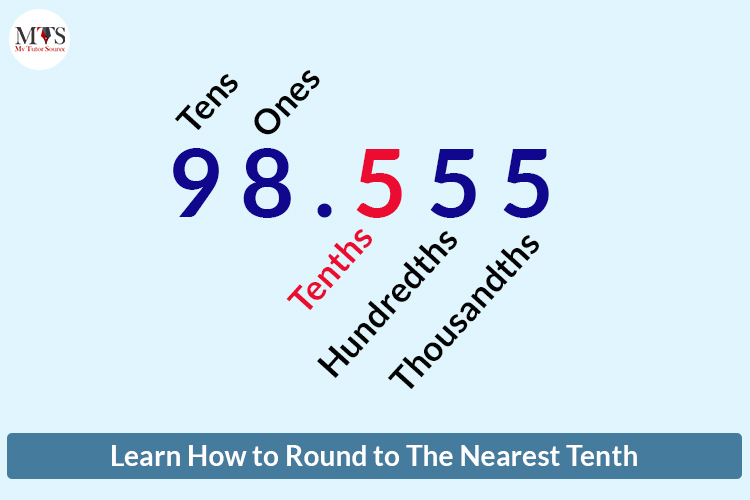

Life gets easy once you learn decimal rounding methods, and using them every day will become a part of your routine. Whether you are estimating your shopping bills, balancing accounts or rounding numbers saves time. In this blog post, you will learn how to round a decimal to the nearest tenth.
Let’s start with what rounding off numbers means. It is a mathematical technique to adjust the decimal place numbers to a particular degree of accuracy to make them easier to use, calculate and understand. They are not the exact correct answer but are still very close to the right or original value.
Decimal numbers or places come right after the decimal point. Let’s learn what ones, tenths, or hundredths digit represents with examples.
Ones digit: it represents the whole numbers and is generally used in daily life to count things, like the number of tomatoes (2.0 tomatoes = two tomatoes)
Tenths digit: it represents one-tenth of something or an item if you cut a cake into 10 equal pieces to distribute (0.2 of a cake = two pieces of a 10-piece cake)
Hundredths digit: it represents one-hundredth of something, like currency such as a cent is worth of one one-hundredth of a dollar (1 cent=$0.01)
While rounding numbers to the nearest digit, look for the numbers right next to its decimal point. For rounding to the nearest tenths, look which digit is right to the tenth place. If it is between 5 and 9, then round up, or if it is 4 or lower, the digit will not change.
The same technique is for rounding to the nearest hundredths, but you have to look for the thousandths place digit this time.
Rounding to the units or ones place means rounding across the decimal place or nearest whole number. Look to the right next to the decimal point, called the tenth place, to round off the ones or unit digits.
Want to practice more examples of Rounding Decimal Numbers? Learn from our expert Math tutors. We give the best tutoring experience.
Take a free trial now and get ready to enhance your knowledge and achieve targeted goals.